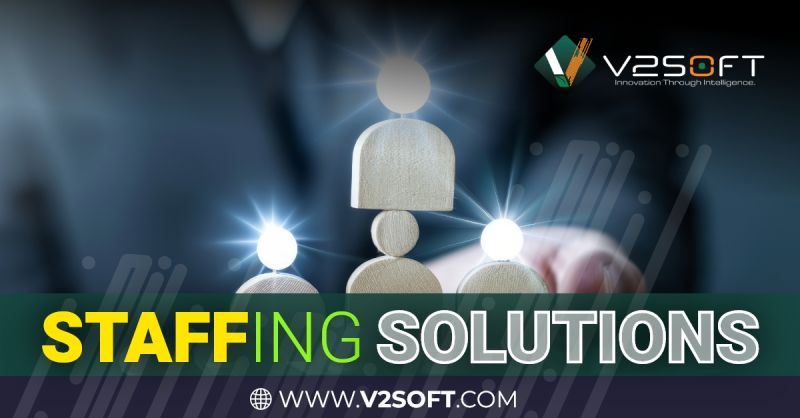
In today’s tech-driven world, IT staffing solutions are more critical than ever. As companies undergo digital transformation, the demand for skilled IT professionals has risen significantly. However, many businesses face recruitment shortages, struggling to find qualified candidates to meet their needs. These shortages have made it increasingly difficult to fill roles such as software engineers, cloud computing specialists, and cybersecurity experts. To tackle these challenges, companies are turning to contract staffing software, advanced recruitment tools, and partnering with workforce solutions companies.
By leveraging modern IT staffing solutions, businesses can empower their recruitment strategies, streamline hiring, and overcome talent shortages. Let’s explore how companies can optimize their staffing efforts and the role AI staffing solutions play in addressing these challenges.
IT Staffing Solutions: Adapting to a Dynamic Market
The IT industry is one of the fastest-evolving sectors, making the demand for specialized talent higher than ever. IT staffing solutions allow companies to source highly skilled professionals quickly and efficiently. Whether businesses need temporary talent for a specific project or are looking for permanent hires, staffing agencies offer access to an extensive network of candidates.
In many cases, the right contract staffing software can help streamline the recruitment process, providing tools for managing candidate databases, assessing skills, and even automating portions of the hiring process. This software enables companies to reduce time-to-hire and ensure that they have the right talent to meet their business needs. For organizations facing talent shortages, IT staffing solutions provide the flexibility and expertise required to stay competitive in a tight labor market.
Challenges in AI Staffing Solutions
While AI in staffing solutions has gained popularity, there are several challenges companies face when implementing these technologies. One of the primary challenges in AI staffing solutions is balancing automation with human oversight. AI tools can quickly analyze resumes, match candidates to jobs, and predict hiring trends, but they can sometimes miss the nuances of human decision-making, such as cultural fit or potential for growth.
Additionally, biases in AI algorithms can create unintended hiring disparities. Companies must be cautious about how they integrate AI in their recruitment processes to ensure they are not inadvertently reinforcing biases. Despite these challenges, AI remains a powerful tool in IT staffing solutions, providing companies with faster access to talent and data-driven insights that can refine recruitment strategies.
Empowerment Staffing: Creating Agile Recruitment Strategies
To overcome recruitment shortages, businesses are adopting empowerment staffing strategies, which focus on creating flexible, scalable hiring solutions. Empowerment staffing is all about giving businesses the tools and flexibility to meet their staffing needs quickly, whether through full-time hires or contract staffing.
For IT departments in particular, empowerment staffing means having the agility to scale teams up or down depending on project requirements. This approach not only helps businesses deal with fluctuating workloads but also ensures they can access highly specialized talent when needed. Contract staffing software plays a crucial role in these strategies, enabling businesses to manage both permanent and temporary workers with ease, ensuring they are equipped to handle any staffing challenges that arise.
Addressing Recruitment Shortages with Contract Staffing Software
In many industries, the issue of recruitment shortages is exacerbated by the fast pace of technological change. The IT sector, in particular, struggles to keep up with the growing need for tech-savvy professionals. Contract staffing software provides a valuable solution to this problem. By automating parts of the hiring process and helping companies manage their temporary workforce efficiently, this software allows businesses to meet immediate talent needs without long-term commitments.
One of the key advantages of contract staffing is flexibility. Companies facing recruitment shortages can bring in professionals for short-term projects, enabling them to stay on track without making costly, long-term hiring decisions. With contract staffing software, businesses can better manage their workforce and ensure they are meeting project deadlines, even when recruitment is difficult.
Partnering with a Workforce Solutions Company
Another approach companies are using to address recruitment shortages is partnering with a workforce solutions company. These companies provide comprehensive staffing services, including recruitment, workforce management, and talent strategy development. By leveraging the expertise of a workforce solutions provider, businesses can optimize their recruitment processes and ensure they are attracting the right talent.
For IT staffing needs, working with a workforce solutions company offers access to a broader talent pool and resources that are not typically available to in-house HR teams. Workforce solutions companies can also help businesses refine their hiring processes, ensuring they remain competitive in a market where recruitment shortages are a significant issue.
Conclusion
In conclusion, businesses today must navigate the complexities of recruitment shortages while striving to find the right talent to support their IT needs. By utilizing IT staffing solutions, integrating contract staffing software, and addressing the challenges in AI staffing solutions, companies can overcome talent shortages more effectively. Furthermore, adopting empowerment staffing strategies and partnering with a workforce solutions company gives businesses the flexibility and tools they need to remain agile in a competitive market.
Through these modern staffing approaches, companies can ensure they have the right people in place to support their growth and technological goals, empowering them to thrive in an ever-changing business landscape.







